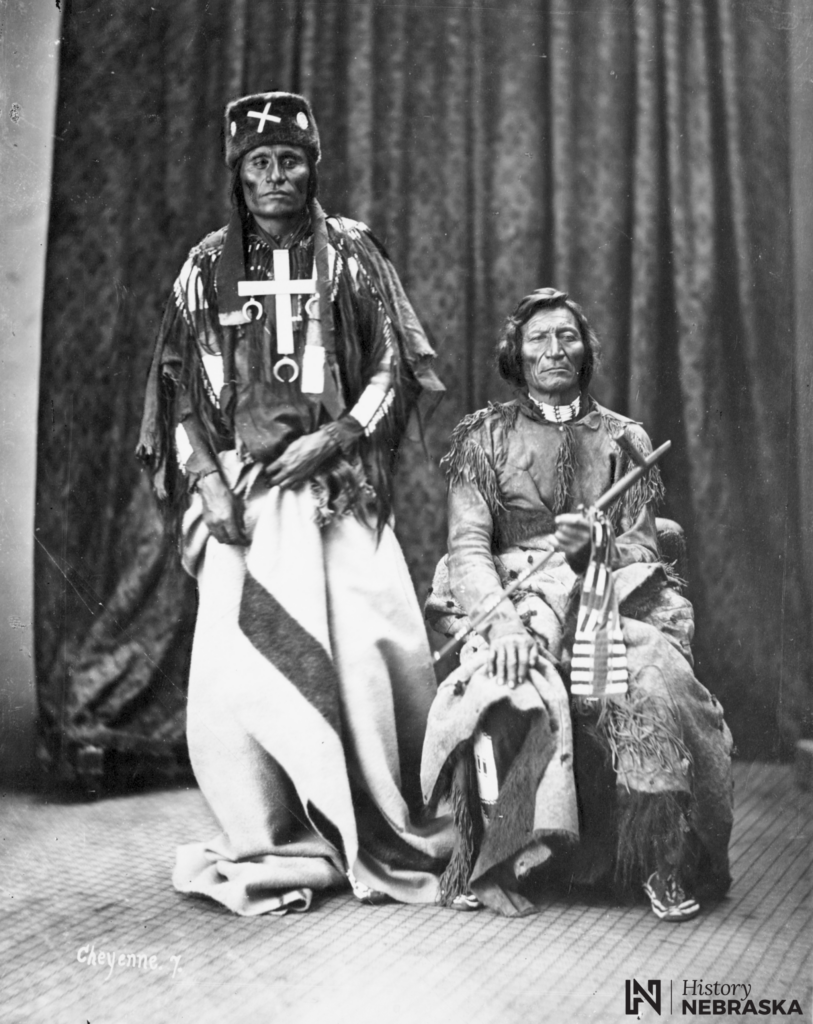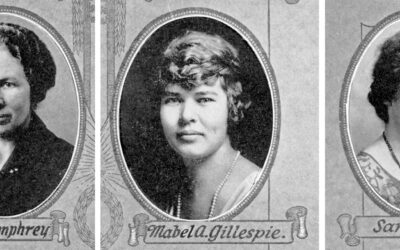 The U.S. Army outpost of Camp Robinson was established in 1874 in response to the need for a military presence near the Red Cloud Indian Agency in northwest Nebraska. The camp was designated as Fort Robinson in 1878. One of the original buildings at the camp was a cavalry barracks erected in 1874. From 1874 to 1877 the building was occupied by various companies of the Third U.S. Cavalry. In 1878 the building was temporarily unoccupied and consequently was available when Dull Knife’s band of Cheyenne was brought into the fort.
The U.S. Army outpost of Camp Robinson was established in 1874 in response to the need for a military presence near the Red Cloud Indian Agency in northwest Nebraska. The camp was designated as Fort Robinson in 1878. One of the original buildings at the camp was a cavalry barracks erected in 1874. From 1874 to 1877 the building was occupied by various companies of the Third U.S. Cavalry. In 1878 the building was temporarily unoccupied and consequently was available when Dull Knife’s band of Cheyenne was brought into the fort.
The Northern Cheyenne tribe had been removed from their traditional home to a reservation with their Southern Cheyenne kinsmen in Indian Territory (later Oklahoma) in 1877. The following year, after suffering from poor food and diseases and having been denied permission to return north, more than 350 Cheyenne decided to break away from the reservation. Under the leadership of chiefs Dull Knife and Little Wolf, the group moved northward through Kansas. Several clashes with army troops and civilians occurred, with the Indians each time able to elude recapture. Eventually, they were able to slip through a cordon along the Union Pacific rail line in Nebraska and resume their northerly trek.
Somewhere in Nebraska the group broke up. Little Wolf and his followers wanted to continue moving north and join the Lakota leader Sitting Bull in Canada. For the time being, they went into hiding in the vast Sand Hills. The second group decided to try to obtain refuge with the Lakota chief Red Cloud, who was a friend of Dull Knife. With this in mind, they set out for the Red Cloud Agency. Unknown to Dull Knife, however, Red Cloud and his people had been moved into Dakota Territory, and only soldiers remained near the old agency.
South of present-day Chadron, Nebraska, an army patrol intercepted Dull Knife and his people, and on October 24, 1878, escorted them into Fort Robinson. A total of 149 men, women, and children were taken into custody and confined in the cavalry barracks. Initially, the Cheyenne were free to leave the barracks as long as all were present for evening roll call. Several of the women were even employed at the fort, and this arrangement continued into December 1878.
During this period, Dull Knife requested that the Cheyenne be allowed either to join Red Cloud at his agency or to remain in their former northern Plains homeland. Attempts were also being made by Kansas officials to extradite certain members of the group to stand trial for alleged crimes committed during their flight through that state. Washington officials insisted on the return of the Cheyenne to Oklahoma.
By late December the Cheyenne were prisoners in the barracks, no longer allowed to come and go. The army was under orders to pressure them into returning south, and the Cheyenne were equally determined never to go back to the southern reservation. In an effort to compel the Cheyenne into submission, Captain Wessels, the Commanding Officer at the fort, refused to give them food or fuel. By the night of January 9, 1879, the impasse had come to a point of crisis, and the Cheyennes broke out of the barracks. Weapons they had hidden earlier were used to shoot the guards, and while some of the men held off the soldiers, the remaining Cheyenne fled in the dark.
A running fight ensued along the White River valley between the fleeing Cheyenne and the pursuing soldiers. At least twenty-six Cheyenne warriors were killed that night and some eighty women and children were recaptured. Those still free eluded the soldiers until January 22, when most were killed or taken prisoner at a camp on Antelope Creek northwest of Fort Robinson. In all, sixty-four Native Americans and eleven soldiers lost their lives during the protracted escape attempt. Dull Knife and part of his family were among the few that managed to get away, and they eventually made their way to refuge with Red Cloud.

Studio portrait of Ó’kôhómôxháahketa (Little Wolf) and Vóóhéhéve (Morning Star/Dull Knife) in November 1873.



